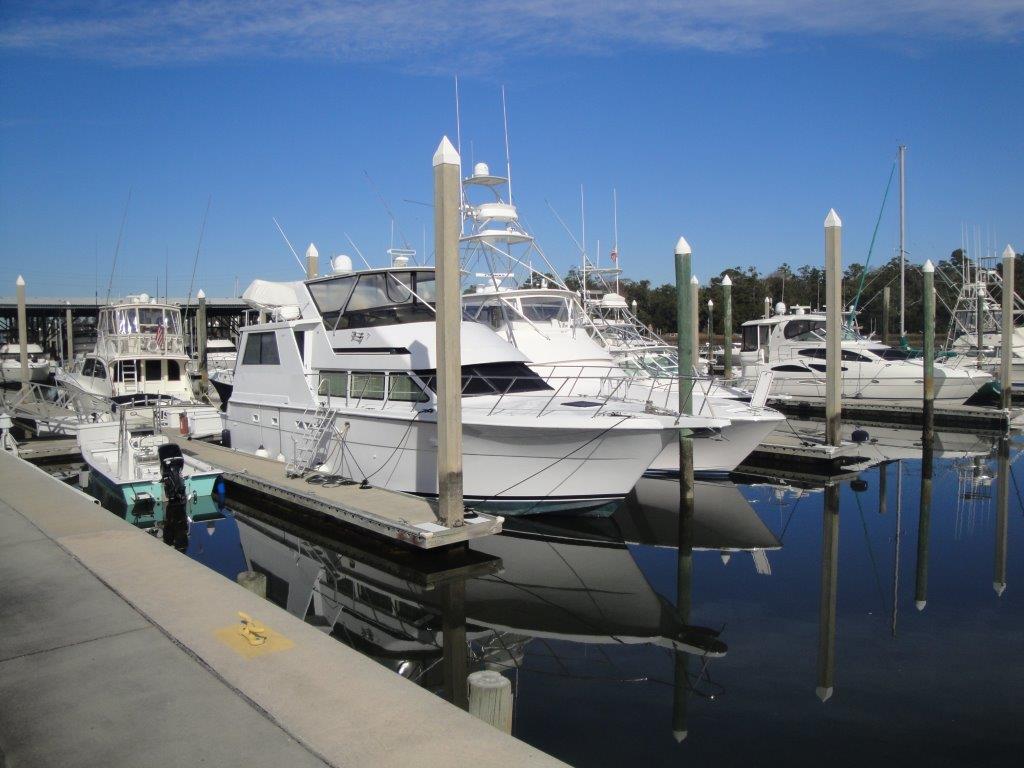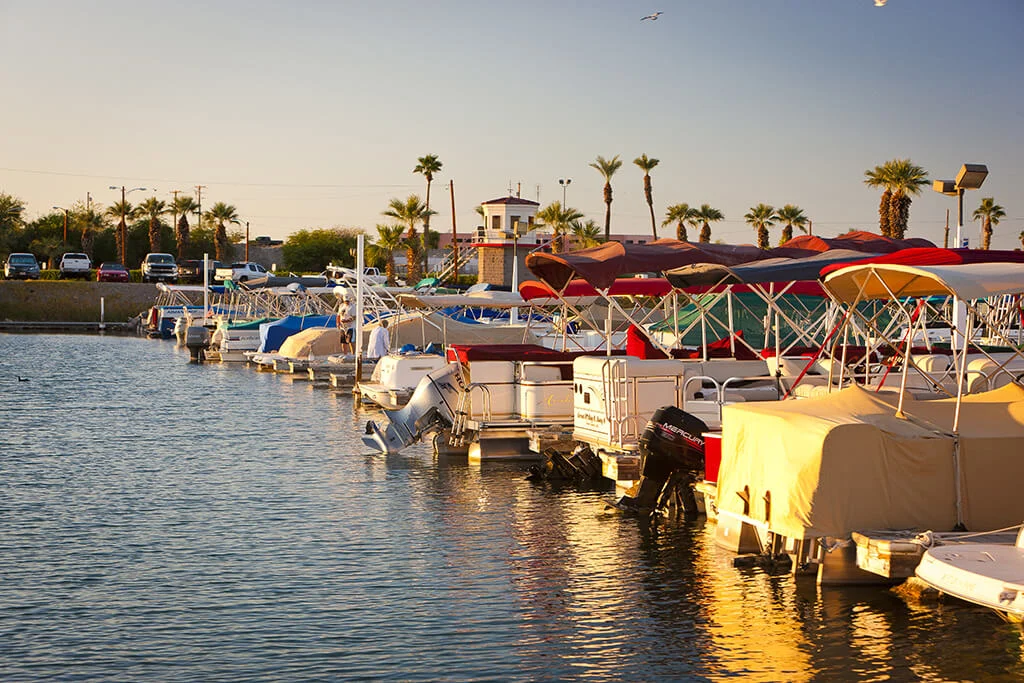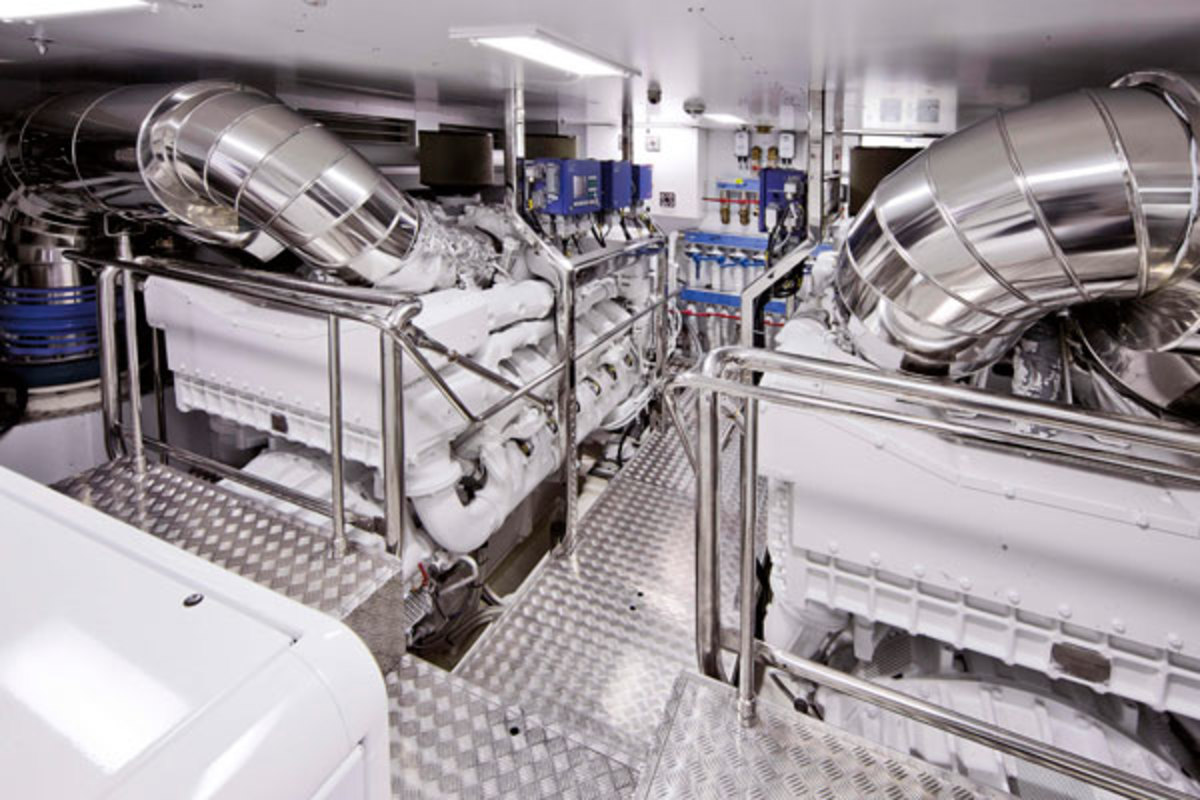Boat Slip Essentials: Maintenance, Safety, and Rental Tips for Owners
For many boat owners, having a safe and convenient place to dock their vessels is of utmost importance. Boat slips offer this convenience, providing secure parking spaces in marinas or harbors.

Enclosed on three sides, a boat slip not only ensures the protection of the boat but also makes it easier for beginners to park their vessels.
Understanding the key features and benefits of boat slips is essential for boat owners wanting to make the most of their maritime experience.
Marina facilities and services often play a significant role in the decision-making process when choosing a boat slip. Additionally, legal and regulatory aspects, ownership vs. rental options, and the overall economics of boat slips should be considered.

Key Takeaways
- Boat slips provide secure and convenient docking spaces within marinas or harbors.
- Choosing the right boat slip involves evaluating marina facilities, services, and legal aspects.
- Boat owners should consider ownership vs. rental options and the overall economics of boat slips.
Understanding Boat Slips
Definition and Types
A boat slip is a designated space or berth in a marina or harbor where boats can be docked or moored safely. It serves as a secure docking location for boats, allowing them to float in the water when not in use.
Boat slips come in multiple sizes to accommodate different types and lengths of boats ^. The design of a boat slip is typically narrow and rectangular, with one open side for easy entrance and exit of the boat ^.
Types of boat slips are mainly differentiated by their sizes, features, and locations, catering to various boat types and user preferences.
Some boat slips offer basic mooring facilities, while others may provide additional amenities like power supply, water, and waste disposal services for a more convenient experience ^.

Advantages of Using a Boat Slip
Protection: Boat slips provide an additional layer of protection for your watercraft. With their design and arrangement, they help keep your boat in the middle of the slip, thus preventing excessive bumping and grinding against the dock's edges ^.
Security: Besides protection, having a boat slip at a marina or harbor offers enhanced security for your vessel. Many marinas have gated accesses, security personnel, and surveillance cameras, ensuring that your boat is guarded against theft and vandalism ^.
Convenience: A boat slip allows for easy boarding and disembarkation, making it a convenient option for boat owners. Some slips even come with additional services, like pump-out stations and shore power connections, making it easier to maintain and use your boat ^.
Space Utilization: Boat slips enable marinas and harbors to efficiently utilize their available space. By creating more "parking spaces", boat slips can accommodate a greater number of watercraft, resulting in more boats being able to moor at a given pier ^.
Considerations When Choosing a Boat Slip
Size and Space Requirements
When selecting a boat slip, it's crucial to consider the size and space requirements of your vessel.
The dimensions of your boat, including gear and extensions, should fit comfortably within the slip. Adequate space for maneuvering your boat in and out without the risk of damage is essential.
It might be helpful to create a list of your boat's measurements to ensure the slip can accommodate its length and width.
Location and Accessibility
The location of a boat slip plays a significant role in making the right choice.
Evaluate the proximity of the slip to your preferred boating areas, the surrounding geographical factors and climate, and convenient access points.
Furthermore, consider the safety and security of the area as well as the accessibility during extreme weather conditions.

Amenities and Features
A well-equipped boat slip can enhance your boating experience.
When evaluating amenities and features, consider the availability of utilities such as water, electricity, and Wi-Fi.
Additionally, make sure the marina has suitable waste disposal facilities, restroom and shower access, and nearby food and entertainment options for added convenience.
Cost and Budget
Finally, assess the cost of the boat slip in relation to your budget.
When comparing boat slips, take into consideration any additional charges for utilities and services.
Weigh the advantages of renting versus owning a slip, based on your financial situation and long-term plans. It could be wise to research various marinas for competitive pricing and special promotional offers.
Marina Facilities and Services
Dock Maintenance and Repair Services
Marinas offer various maintenance and repair services to ensure that the boats are in top condition.
They typically provide dock maintenance such as cleaning, painting, and structural check-ups.
Additionally, marinas may have on-site repair facilities for the boats, including engine repair or hull maintenance.
Some marinas also provide access to professionals who can carry out specialized tasks like electrical repairs, rigging, and even sail repair.
These services help boat owners maintain their vessels and ensure they run smoothly, thereby enhancing their overall boating experience.
Marina Security Measures
Security is a top priority at marinas. They employ various security measures to protect the boats and their owners, ensuring a safe and comfortable environment.
For instance, marinas employ security personnel who patrol the area around the clock.
Additionally, many marinas install surveillance cameras covering all critical areas such as parking lots, piers, and mooring points.
Security gates or card access systems are also in place to restrict unauthorized entry.
These comprehensive measures help to deter any potential threats and provide boat owners with peace of mind.
Additional Marina Amenities
Apart from offering docking and maintenance services, marinas also provide a range of additional amenities to enhance the boating experience. These can include:
- Water and electricity hookups: Many marina slips have water and electricity supplies to help boat owners operate their vessels and live on board comfortably.
- Fuel docks: Marinas typically have designated areas for refueling, ensuring that boat owners have easy access to fuel at all times.
- Wi-Fi services: Some marinas provide Wi-Fi to keep boat owners connected, whether for navigation, communication, or entertainment purposes.
- Restrooms and shower facilities: Clean, well-maintained restrooms and showers are often available in marinas for boat owners and their guests.
- Recreational facilities: Marinas may offer various recreational amenities such as restaurants, bars, club rooms, or even swimming pools to cater to the diverse needs of boating enthusiasts.
Boat Slip Design and Features
Mooring Points and Safety
Boat slips are designed with safety in mind, incorporating features such as cleats, bumpers, and pilings to optimize docking and prevent damage to the boat.
These elements contribute to the stability of the vessel while docked or moored and ensure that boats remain securely in place, reducing the risk of accidents or damage. Marina Facilities play a vital role in ensuring the safety of both vessels and their owners.
Space Optimization for Multiple Boats
Boat slips provide a well-organized and efficient way to accommodate multiple boats within the confines of a marina or harbor.
They create designated parking spaces for boats, allowing more watercraft to be moored alongside a pier.
The proper slip size is crucial for allowing sufficient space for maneuvering boats in and out without the risk of damage.
It is essential to consider the length and width of each boat, including all gear and extensions, to ensure vessels fit properly and safely in the slip.
Proper planning and design ensure there is less space for potential mishaps while maximizing the available space in the marina.
Environmental Considerations
When designing boat slips, it is essential to consider the impact on the surrounding environment. A well-designed slip should minimize the potential for water pollution and negative effects on marine life.
Factors that might play a role in environmental factors include:
- Water Quality: Proper management of waste and respect for the existing marine ecosystems play a vital role in maintaining the water quality around boat slips.
- Wave Protection: Adequate wave protection, including the use of breakwaters, ensures that the marked increase in boat traffic will not adversely affect the stability and health of the surrounding coastal area.
- Sustainability: Incorporating eco-friendly materials and design principles such as solar-powered lighting improves the overall sustainability of boat slips and reduces their environmental impact.
Legal and Regulatory Aspects
Local Regulations on Mooring
When it comes to boat slips, it is essential to be aware of the local regulations that govern mooring and docking practices.
These rules may vary depending on the location, and they are usually enforced by local authorities or marina management. Some common regulations to be aware of include:
- Permitted hours of access: Some marinas may have restrictions on when you can access your boat slip, to ensure the safety and well-being of all users.
- Noise ordinances: It is important to adhere to any noise restrictions in place, as excessive noise can disturb fellow boaters and neighbors.
- Environmental regulations: Many locations have specific rules to protect the local ecosystem, such as proper waste disposal and prohibiting the use of certain cleaning agents.
Ownership and Rental Agreements
When dealing with boat slips, understanding the ownership and rental agreements is crucial.
There are two main approaches to securing a boat slip: ownership and rental. Both options come with their unique set of responsibilities and legal implications.
- Ownership: Owning a boat slip involves the purchase of an individual or shared space within a marina. This option comes with a higher level of responsibility, such as regular maintenance, repairs, and ensuring compliance with regulations. Financial aspects, such as purchase costs, annual fees, and potential maintenance costs, must also be taken into consideration.
- Rental: Renting a boat slip usually involves a monthly or seasonal fee, providing a more flexible option for boaters who don't wish to invest in ownership. Rental agreements may have certain stipulations, such as the duration of the rental, payment terms, and any maintenance responsibilities.
Boat Slip Ownership vs. Rental
Advantages of Boat Slip Ownership
Owning a boat slip offers several benefits to the boat owner.
One of the main advantages is that it can be considered a long-term investment, as boat slip prices can appreciate over time.
In addition to making a solid investment, owning a boat slip also provides a sense of stability and security for your vessel.
Another benefit of owning a boat slip is the potential for customization. Owning a slip allows you to make alterations to suit your specific needs and preferences, such as adding power hookups or customizing dock boxes.
Furthermore, owning a boat slip can also grant you access to exclusive marina amenities, such as private showers, fueling stations, and laundry facilities1.
Boat Slip Rental Considerations
Renting a boat slip, on the other hand, offers more flexibility and may be more affordable for those with a limited budget2.
Slip rental allows you to park at prime locations in the marina without the commitment and financial burden associated with purchasing a slip. Additionally, renting a slip typically includes access to various amenities, such as electricity, Wi-Fi, clean water, and dock boxes3.
However, when considering renting a boat slip, it is important to carefully evaluate the costs.
Monthly rental rates can range from $18 to $22 per foot4, and you may have to pay extra for certain amenities. Furthermore, be sure to ask about any additional fees or requirements imposed by the marina.
Additional Considerations for Boat Owners
Fishing and Recreational Activities
Boat owners often enjoy fishing and recreational activities, making it essential to consider the local regulations and best practices.
Familiarize yourself with local fishing regulations and ensure you have the necessary permits. Moreover, equipping your boat with life jackets, first aid kits, and safety equipment should be a priority.
Boat Storage and Cleaning
Proper boat storage and cleaning are crucial for maintaining the vessel's condition and functionality.
Boat slips often provide the option of either wet or dry storage, depending on boat owners' preferences and the boat's size.
Regardless of the storage type, it is essential to:
- Frequently wash the deck and hull with a gentle cleaning solution.
- Regularly check and maintain the boat's electrical and mechanical systems.
- Inspect and clean the bilge area to prevent buildup and potential hazards.
Preparing for Inclement Weather
To better prepare for inclement weather, boat owners should consider:
- Monitoring weather forecasts and understanding boat slip safety tips.
- Installing surge protectors when using electricity hookups at the slip.
- Ensuring the mooring points and dock lines are in good condition.
- The main dock, which runs parallel to the shoreline
- Two finger piers, extending into the water from the main dock
- Dry storage
- Fueling services
- Maintenance and repair facilities
- Water, electrical, and sewage connections
- Location: The demand for boat slips is usually higher in popular boating areas, near waterfront attractions, or in regions with limited supply. These locations can command higher rental fees, resulting in greater returns for boat slip owners.
- Management: A well-managed marina or dockmaster service can help ensure that boat slips are maintained properly and operated efficiently, which can contribute to higher occupancy rates and profitability.
- Ownership vs. Renting: Compare the costs and benefits of purchasing a boat slip vs. renting one. For example, a 35-60 ft slip in Alamitos Bay Marina, Long Beach, can cost between $150,000-$500,000, whereas renting the same size slip may cost $12-$14 per foot per month.
- Potential for Appreciation: Like any real estate investment, the value of a boat slip may increase over time based on market demand. This can result in capital gains upon the eventual sale of the slip.
Charlie is Editor-in-Chief of Sea Magazine







